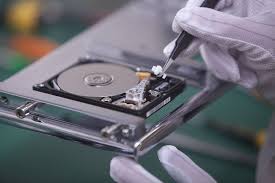In the digital age, where virtually every aspect of our lives is intertwined with technology, the need to investigate and analyze digital footprints has become paramount. This is where computer forensics plays a crucial role in uncovering evidence and tracing the activities of individuals or entities involved in cybercrimes or other digital misdeeds. By employing specialized techniques and tools, computer forensics experts can sift through vast amounts of digital data to extract valuable information, essentially leaving no trace unnoticed. Digital fingerprints, often referred to as digital footprints, are the digital remnants left behind by a user’s activities on various devices, networks and online platforms. These footprints can include browsing history, emails, chat logs, file transfers, social media interactions and much more. While users may believe they are erasing their tracks by deleting files or clearing their browsing history, computer forensics can often uncover these hidden artifacts, enabling investigators to reconstruct a detailed timeline of events.

One of the primary objectives of computer forensics is to preserve the integrity of digital evidence. When a crime is suspected or an incident occurs, forensic experts employ a meticulous and standardized approach to ensure that evidence is collected, preserved and analyzed in a manner that is admissible in court. This involves creating a digital copy of the data, known as an image, to prevent any modifications or tampering. By working with these images, computer forensics specialists can delve deep into the data, examining file structures, metadata and timestamps to establish a clear chain of custody. The process of tracing digital footprints involves employing a variety of techniques and tools. Forensic investigators use specialized software to recover deleted files, extract data from damaged devices and analyze digital artifacts. They may also employ network forensics techniques to capture and analyze network traffic, identifying connections and reconstructing communication patterns. Furthermore, advanced data recovery techniques can be employed to retrieve data from encrypted or password-protected devices.
Computer forensics is not limited to criminal investigations; it plays a critical role in various fields. It can be used in corporate investigations to uncover intellectual property theft, employee misconduct or data breaches. In civil litigation, computer forensics can help reconstruct digital activities, validate claims and provide evidence in support of legal proceedings and click site to read more https://peterbrightman.com/. Additionally, it aids in incident response and cybersecurity, enabling organizations to identify and mitigate vulnerabilities and prevent future attacks. However, the field of computer forensics faces constant challenges due to technological advancements. As new devices, software and encryption methods emerge; forensic experts must stay up to date with the latest tools and techniques to ensure they can effectively trace digital footprints. Furthermore, privacy concerns and legal frameworks add complexity to the process, requiring computer forensic specialists to adhere to strict guidelines and regulations.
